All gases pose a potential threat to life. While some, like hydrogen (H₂), are widely recognised as dangerous due to their flammability, some seemingly ordinary gases, such as the colourless carbon monoxide or nitrogen dioxide, can also be hazardous to life and should be carefully considered when used in any type of installation.
Even though nitrogen makes up about 78% of the air we breathe, an excessive amount of nitrogen in a confined space can displace oxygen, leading to asphyxiation. Additionally, toxic gases, including hydrogen sulphide (H₂S), can occur naturally, especially in oil and gas industries. Hydrogen sulphide, known for its rotten egg smell at low concentrations, is highly toxic and flammable. Exposure to 100 ppm of H₂S can cause severe respiratory distress, while concentrations of 200 ppm or higher can be fatal within minutes, affecting the nervous system and other vital functions.
Carbon monoxide (CO) is another dangerous colourless gas. At levels as low as 200 ppm, it can cause symptoms such as headaches and dizziness, while higher concentrations can result in unconsciousness or death. Carbon dioxide (CO₂), commonly used in soft drinks, is often perceived as harmless, but in confined spaces, it can accumulate and displace oxygen. Even moderately elevated levels of CO₂ can cause drowsiness, unconsciousness, or death by preventing the body from efficiently exchanging oxygen.
Oxygen, essential for human life at around 21% of the atmosphere, becomes a risk when its concentration exceeds normal levels. At 23% or higher, oxygen significantly increases the flammability of many materials, presenting a fire hazard in certain environments, especially when combined with gases like nitrogen.
Therefore, all gases, regardless of their perceived harmlessness, need to be handled with care. Each gas should be carefully assessed based on its specific characteristics, including toxicity, flammability, concentration (measured in parts per million) and potential health effects. The risks, particularly in confined spaces where toxic gases may accumulate, require thorough evaluation before handling any gas.
A BSL gas mixer is a highly efficient and reliable solution for gas blending operations. Our equipment is engineered to handle all major industrial gases, as well as some lesser-used ones, in a controlled and safe manner. In addition to mitigating the risks associated with handling dangerous gases, BSL gas mixers offer precise and accurate gas blending capabilities. They incorporate advanced mixing technologies and are equipped with sophisticated control systems that enable precise gas measurement and delivery. This ensures the desired gas mixtures are achieved with a high level of accuracy, reducing the risks of human error and potential accidents due to improperly blended gases.
Our gas mixers are also equipped with safety features such as pressure relief valves (PRVs), low-pressure outlet gas regulators and a gas pressure balancing system with an interlock, ensuring that both inlet gases must be present for there to be a mixed gas output. These safety features prevent overpressure or other unsafe conditions during use.
They are designed to handle a wide range of gas pressures and flow rates, making them suitable for various applications and industries. This versatility allows for greater flexibility in processes and operations, resulting in increased efficiency and productivity. By accurately blending gases, a BSL gas mixer helps users reduce gas waste and electricity costs, delivering savings for your business. Additionally, their robust design and durable components ensure long-term use and minimal maintenance, leading to significant cost savings over time.
